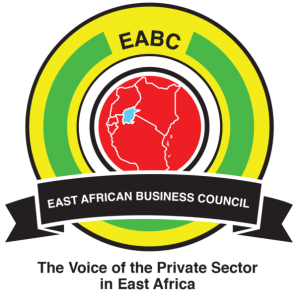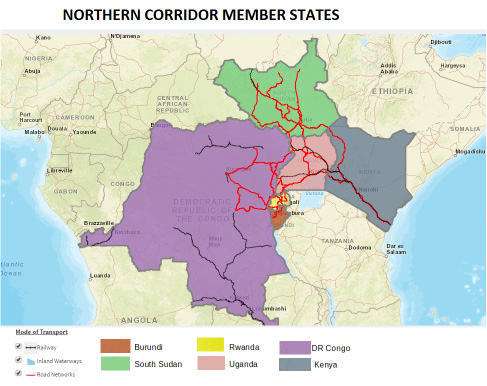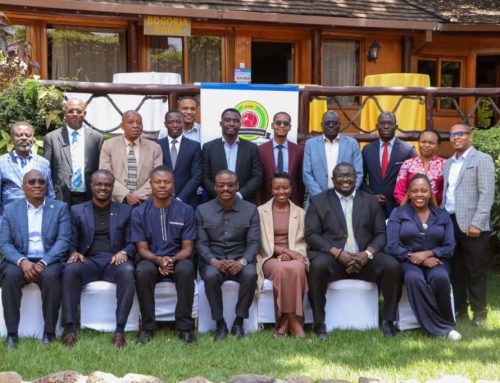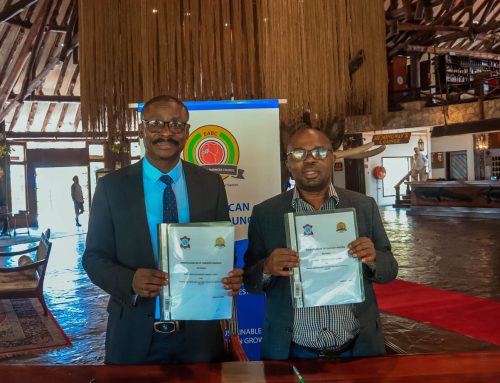ABOUT NORTHERN CORRIDOR TRANSIT AND TRANSPORT AGREEMENT (NCTTA)
he Northern Corridor Transit and Transport Coordination Authority NCTTA was formed in 1985 through an agreement between five countries which includes Kenya, Burundi, DRC Congo, Uganda and Tanzania the common purpose was to use the port of Mombasa either for imports or exports, the agreement then includes South Sudan in 2012. The main purpose of the secretariat is to coordinate the movement of goods and persons from the port of Mombasa to member states. The agreement mandates the secretariat to form policies in conjunction with the governments of member states to ensure a smooth flow of cargo and ensure the cost of doing business along the corridor is low and the time taken to transit through the corridor is reduced.
WHAT WAS THE IMPACT OF COVID-19 CONTAINMENT MEASURES ON THE NORTHERN CORRIDOR?
One of the mandates of the Northern Corridor is to make it economically viable and during the advent of covid 19, there were containment measures people were not moving from one country to another though goods and cargo were allowed to move business along the corridor was closed down if you would go through from Mombasa to malaba you will find that businesses along the corridor were shut down as a result of economic downfall. The border point was choked up because of the piling of cargo trunks and delays because one could not cross without a covid 19 certificate which drivers were to get before their existence and entry into one state. The delays make the costs of the goods expensive in the end.
WHAT RESILIENCE AND RECOVERY MEASURES AND STRATEGIES DID YOU PUT IN PLACE TO MITIGATE THE NEGATIVE IMPACT OF COVID-19 CONTAINMENT ALONG THE NORTHERN CORRIDOR?
Immediately covid 19 was detected in the country and containment measures were put in place we introduced virtual meetings at all border points and stakeholders of the corridor every Tuesday to iron out issues that were hindering the smooth flow of cargo. We even brought in the ministries of health of member states in trying to have uniform policies on crossing the borders. We also together with the national government and the county government of Mombasa open a testing center in miritini it had a capacity of 80 people but we managed to upgrade it to accommodate 400 people a day to ensure all the drivers heading to the port of Mombasa pick cargo had valid covid 19 certificate and as they move to the border points they would cross without delays. We also started an awareness campaign a lot in the corridor to sensitize the public that drivers were not necessarily the cause of the spread of covid 19 as they were being
victimized. We issued over 10,000 face masks and reflector jackets with sensitization messages printed on them that the drivers are one of us and are doing inessential services. Together with other stakeholders like trade mark east Africa we came up with a mobile application through which the drivers would get the information about covid 19 testing which would be used at the border point rather than the physical exercise. We also came up with new routes to ease the congestion of Malaba and Busia border points at Luahaha which were used by the empty container back to
Mombasa.
WHAT IS THE CURRENT STATE OF TRADE FACILITATION AT THE NORTHERN CORRIDOR?
We have been advocating for shorter transit routes passing through Holili Taveta to shorten the routes to some countries like Rwanda and Burundi, we have done sensitization on the use of the SGR and intermodal transfer of SGR at Naivasha to member countries. We have advocated for roadsides stations so that the drivers can rest on the transit for safety reasons and create a business on the corridor which is more organized. We have financed a visibility study on the roadside station at kikobei in Nakuru County which is going to start soon. We have also done road safety on the
corridor and mapped out black spots as we engage other road agencies to reduce road accidents along the corridors.
We have mobilized funds through the e funds more than 200 million dollars which is covid 19 relief fund which we are helping small businesses along the corridors who were affected by the pandemic to start afresh.
WHAT OPPORTUNITIES AND LESSONS DID/ HAS COVID-19 BROUGHT FORTH?
The main lesson we learned through the pandemic is that it’s not a must to be
physically present for us to transact business, the use of IT is very important to reduce
human interactions. If we embrace IT tools especially on clearance cross-border trade
some of this business would move very fast. There is a need for member states of the
EAC to form policies that will cut across the states and help when such a pandemic
occurs in the future.
WHAT DO YOU RECOMMEND THE GOVERNMENTS OF THE EAC PARTNER STATES AND THE PRIVATE SECTOR DO TO FACILITATE TRADE AND BUSINESS RESILIENCE ALONG THE NORTHERN CORRIDOR?
When we look at the port of Mombasa last year more than 30 million tones it did 34.4
million tones in and out of the port but what came through the corridor was 32 million
but the corridor has cargo which originated from major cities from Nairobi and Kampala
passing through the corridor, so the need of harmonized policies from the member
states on how to develop the corridor. Alternative moods of transport like the lake
transport which is cheaper and safer compared to another mode of transport. We need
to look at how to make the corridor green because the green corridor is more efficient
as we look at climate change and vehicle loads as well as eco-driving to save fuel.
The governments need to work together to realize this goal. We have done a study of
transport needs in southern Sudan the country is in tatas in terms of transport, so it’s
upon the member states to come together when asking for aid as it’s easier to
negotiate since they are a block.
HOW DO YOU THINK THE EAC REGION CAN PREPARE FOR SUCH EMERGENCIES/ PANDEMICS IN THE FUTURE?
As EAC member states we need to be prepared for future in any other pandemic by going borderless with the African continental free trade we need to see how the EAC can trade among ourselves, how can we have the same regime in terms of taxes, how can we reduce some taxes and non-barriers along the road. We need to move from physical meetings to IT where we can transact business anywhere in this world. We don’t need to be stamping those documents let’s embrace technology in doing business along the corridor.





